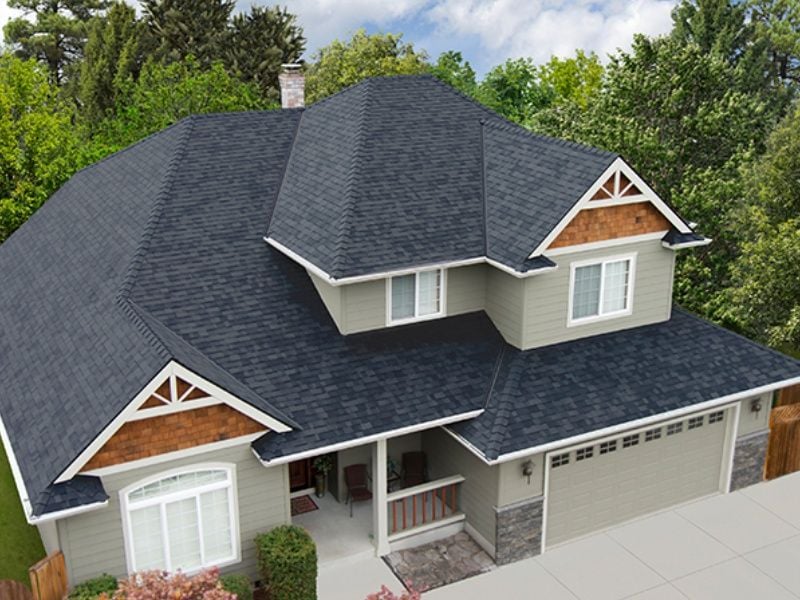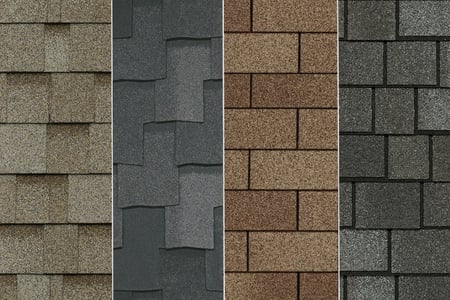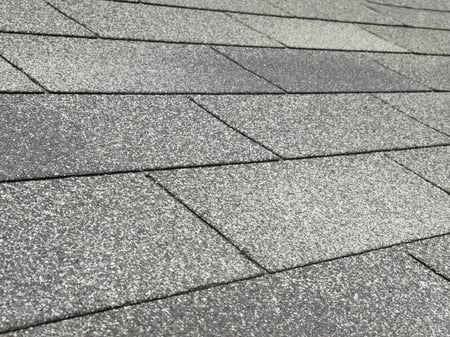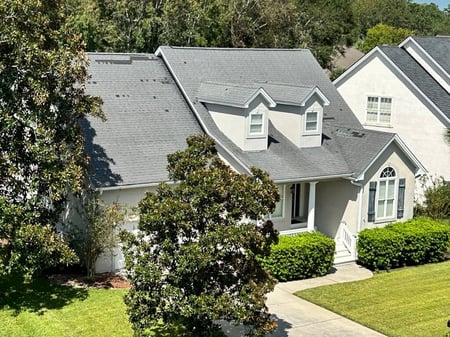
Your beloved asphalt shingle roof serves as the first line of defense against the elements, enduring constant exposure to sunlight, rain, wind, and temperature fluctuations. It’s quite the hero! However, over time, it's not uncommon for shingles to undergo changes in color, altering their appearance from their original hue. You may have even experienced this phenomenon on your very own roof!
At RoofCrafters, we believe that understanding the reasons behind these color changes and whether they signify cause for concern is essential for homeowners like you seeking to maintain the integrity and aesthetics of their roofing systems. Shingle color alterations can stem from various factors, including prolonged exposure to UV rays, weathering, biological growth such as algae or mold, manufacturing variations, and chemical reactions.
While some degree of color change is a natural occurrence due to aging and environmental exposure, significant or irregular discoloration may indicate underlying issues that warrant attention. So, let’s talk about it, shall we? Stick around to learn whether or not it’s normal for shingles to change color, the reasons why, and how you can prevent it. Let’s get started!
Is It Normal for Shingles to Change Color Over Time?

In short, yes! It's completely normal for shingles to change color over time due to various factors such as exposure to sunlight, weathering, and natural aging processes. The extent and rate of color change can vary depending on the type of shingles, environmental conditions, and maintenance practices.
Asphalt shingles, for example, are susceptible to fading over time due to exposure to UV rays from the sun. This can cause the shingles to lose their original color and take on a lighter or washed-out appearance. Other factors such as moisture, algae growth, and airborne pollutants can also contribute to changes in shingle color.
While some color change is expected as shingles age, significant or uneven discoloration may indicate underlying issues such as algae or mold growth, weather-related damage, or manufacturing defects. Regular inspections and maintenance can help identify any problems early on and prevent further damage to your roof.
If you're concerned about the color changes in your shingles, it's a good idea to inspect your roof periodically and address any issues as needed. Additionally, consulting with a roofing professional can provide valuable insights and recommendations for maintaining the appearance and performance of your roof over time.
Why Are My Shingles Changing Color?

Shingles can change color due to a variety of factors, including exposure to sunlight, weathering, and natural aging processes. Here are 6 common reasons why your shingles might be changing color:
.png?width=1200&height=200&name=Recommended%20Reading%20(86).png)
UV exposure: Over time, exposure to sunlight can cause shingles to fade or change color. This is particularly common with asphalt shingles, which may lose their original color due to UV rays.
Weathering: Rain, wind, snow, and other weather conditions can contribute to the deterioration of shingles, leading to changes in color. Moisture can cause streaking or discoloration, especially on certain types of roofing materials.
Algae and moss growth: In moist environments, algae, moss, or lichen can grow on shingles, causing them to appear discolored or streaked. This growth can vary in color from green to black, depending on the type.
Mildew and mold: Similar to algae and moss, mildew and mold can thrive in damp conditions and cause discoloration of shingles. Mold typically appears as black or dark streaks on the surface of the shingles.
Chemical reactions: Certain chemicals present in the environment or in roofing materials themselves can react with sunlight or moisture, leading to changes in color over time.
Manufacturing variations: Sometimes, variations in the manufacturing process can result in differences in color among shingles, even within the same batch or lot.
If you're concerned about the color changes in your shingles, it's a good idea to inspect them to determine the cause. Depending on the underlying issue, you may need to take steps to clean or repair your roof to maintain its appearance and structural integrity.
Additionally, regular maintenance and cleaning can help prolong the lifespan of your shingles and prevent further discoloration. If the color change is significant or accompanied by other signs of damage, you may want to consult with a roofing professional for advice on how best to address the issue.
How Can I Protect My Shingles From Weathering?

Protecting your shingles from weathering can help extend their lifespan and maintain their appearance. Here are some tips to help prevent weather-related damage to your shingles:
.png?width=1200&height=200&name=Recommended%20Reading%20(87).png)
Choose high-quality materials: When installing or replacing your roof, opt for high-quality shingles that are designed to withstand weathering and UV exposure. Look for products with good warranties and ratings for durability.
Proper installation: Ensure that your shingles are installed correctly according to manufacturer guidelines and local building codes. Proper installation includes using the right type and amount of fasteners, following recommended overlap patterns, and ensuring adequate ventilation in your attic space.
Regular inspections: Conduct regular inspections of your roof to identify any signs of damage or wear. Look for missing, cracked, or loose shingles, as well as areas where water may be pooling or leaking.
Prompt repairs: Address any issues or damage promptly to prevent further deterioration. Replace damaged or missing shingles as soon as possible to protect the underlying layers of your roof from exposure to the elements.
Clean gutters and downspouts: Keep your gutters and downspouts clear of debris to prevent water from backing up and causing damage to your roof. Clogged gutters can lead to water pooling on your roof, which can accelerate weathering and deterioration of your shingles.
Trim overhanging branches: Trim back any overhanging tree branches that could potentially damage your roof during storms or high winds. Branches rubbing against shingles can cause abrasion and premature wear.
Apply protective coatings: Consider applying a protective coating or sealant to your shingles to help minimize UV damage and weathering. Some coatings can also provide added waterproofing and extend the lifespan of your roof.
Proper ventilation: Ensure that your attic is properly ventilated to prevent heat and moisture buildup, which can accelerate shingle deterioration. Proper ventilation can help regulate temperature and humidity levels, reducing the risk of damage from condensation and mold growth.
Do Your Color Changing Shingles Have You Blue?
All in all, it's natural for shingles to change color over time due to various factors such as exposure to sunlight, weathering, and aging. While some degree of color change is normal, significant or uneven discoloration may indicate underlying issues that require attention.
To prevent excessive color changes and maintain the appearance of your shingles, it's important to take proactive steps such as choosing high-quality materials, ensuring proper installation, conducting regular inspections, and addressing any damage promptly. Additionally, maintaining clean gutters, trimming overhanging branches, and promoting proper attic ventilation can help prolong the lifespan of your shingles and protect them from weather-related damage.
By following these preventive measures and staying vigilant about roof maintenance, you can help preserve the color and integrity of your shingles for years to come. If you have concerns about the color changes in your shingles or need assistance with roof maintenance, be sure to hit the “Schedule an Inspection” button down below, and one of our experts will walk you through your options!
My name is David Toth and I am the lead estimator in North Florida with RoofCrafters Roofing. Originally from New Brunswick, I have called Florida home for the past 47 years. I enjoy cooking along with traveling to different historical areas in Florida when I have free time.



